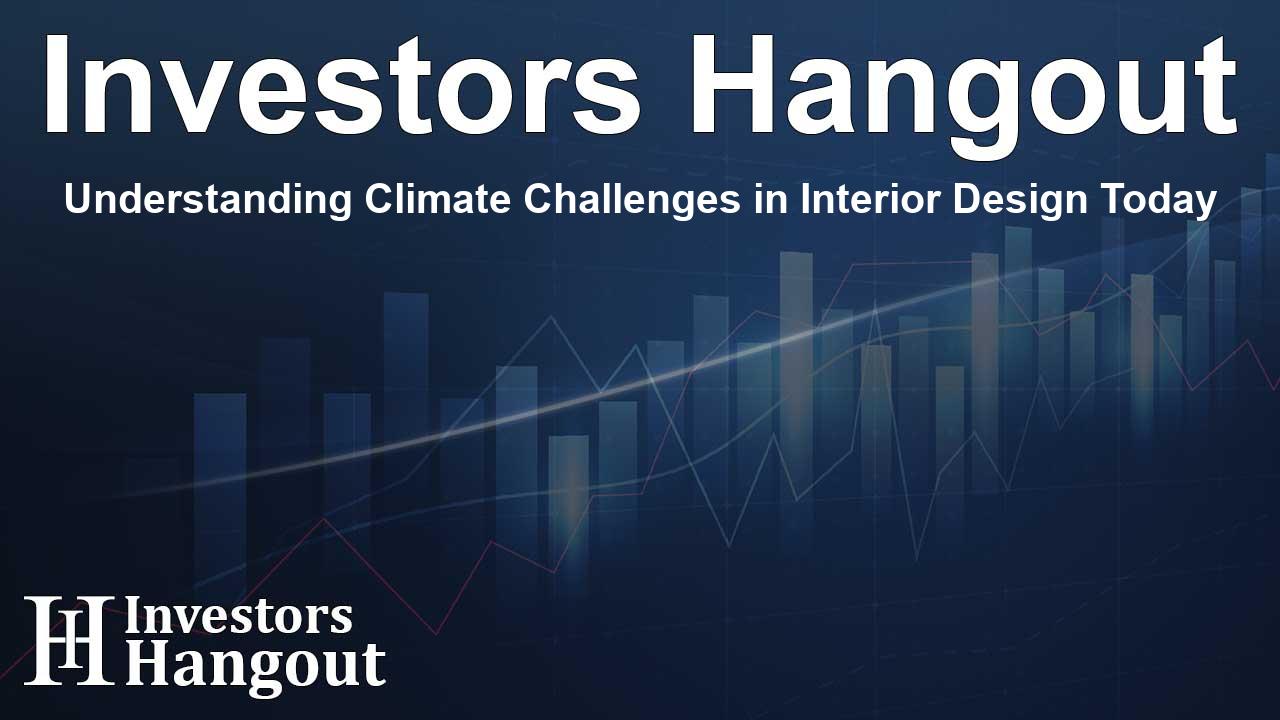Understanding Climate Challenges in Interior Design Today

Understanding the Impact of Extreme Heat
The American Society of Interior Designers (ASID) has released an insightful design brief that delves into the effects of extreme heat on buildings and their occupants. This knowledge is crucial for interior designers tackling the growing challenges presented by climate change. Developed in collaboration with the Chemical Insights Research Institute (CIRI), the publication titled "ASID Impact of Design Brief: Climate Impacts on Building Resiliency & Human Health" focuses on three pivotal aspects: climate, building resilience, and human well-being.
Exploring Material Performance and Human Health
This latest brief places a spotlight on how extreme temperatures influence the built environment and the health of its occupants. It examines the intricate dynamics of environmental conditions and material performance, providing professionals with the information necessary to enhance safety, comfort, and sustainability. Khoi Vo, ASID's CEO, emphasizes that interior spaces are a vital barrier protecting people from the outside world and that design strategies must evolve to prioritize resilience and health amid climate fluctuations.
The Role of Interior Designers
Interior designers are instrumental in the selection of materials, which can greatly affect how buildings withstand extreme weather events. Marilyn Black, Ph.D., a senior technical advisor for CIRI, pointed out that the choices made by designers can significantly mitigate the repercussions of environmental challenges on occupants' health.
Impact of Severe Weather on Building Materials
Severe weather incidents can cause indoor pollution and elevate levels of volatile organic compounds (VOCs). The design brief highlights how extreme heat raises these emissions, making it essential for designers to understand how materials react under different environmental conditions.
Influence of Extreme Temperatures on Health
This document also sheds light on health risks associated with extreme temperatures. It informs designers about potential consequences such as heat-related illnesses, cardiovascular diseases, and respiratory ailments, particularly for vulnerable populations who may already face health disparities. Findings illustrate that extreme temperatures correlate with increased VOCs and can lead to a variety of health issues.
Strategies for Enhancing Building Resilience
The report concludes by providing actionable strategies for interior designers to enhance building resilience and alleviate health issues related to extreme heat:
Integrative Design Approach
It is essential to unite the owner, design team, and other critical stakeholders early in the design process. This collaboration facilitates goal setting and helps identify potential risks for occupants.
Evaluating Material Choices
When selecting materials, finishes, and furnishings, it is vital to prioritize those that promote human health and minimize indoor pollution. This proactive approach leads to improved resilience within environments.
Engagement and Communication
Clear communication among stakeholders is key. Designers are encouraged to monitor outcomes and gather data to better understand the real-world effects of their designs on occupant health.
About ASID and CIRI
The American Society of Interior Designers is devoted to demonstrating the powerful impact of design on daily life. Through various programs, ASID supports a diverse membership base involved in different sectors of interior design. They strive for a robust collaboration among all design disciplines, ensuring voices are heard across important topics like sustainability and human-centric design.
Chemical Insights Research Institute (CIRI) dedicates its work to understanding environmental exposure and its implications on health. This nonprofit organization supplies critical data for informed decision-making, aiding various stakeholders, including manufacturers and consumers, in mitigating health risks.
Frequently Asked Questions
What is the primary focus of the ASID design brief?
The ASID design brief primarily examines how extreme heat affects the built environment and occupant health, emphasizing the relationship between climate, material performance, and human well-being.
Who collaborated on this research?
ASID collaborated with the Chemical Insights Research Institute (CIRI) to produce this important research and design brief.
What health issues are linked to extreme heat?
Extreme temperatures can lead to various health issues, including heat-related illnesses, cardiovascular diseases, and respiratory ailments, particularly among vulnerable populations.
How can interior designers mitigate climate-related risks?
Designers can mitigate risks by adopting integrative design approaches, choosing materials that reduce indoor pollution, and engaging in transparent communication with stakeholders.
What role does ASID play in the interior design community?
ASID supports interior design professionals through advocacy, educational programs, and resources, highlighting the significance of design in improving human experiences.
About Investors Hangout
Investors Hangout is a leading online stock forum for financial discussion and learning, offering a wide range of free tools and resources. It draws in traders of all levels, who exchange market knowledge, investigate trading tactics, and keep an eye on industry developments in real time. Featuring financial articles, stock message boards, quotes, charts, company profiles, and live news updates. Through cooperative learning and a wealth of informational resources, it helps users from novices creating their first portfolios to experts honing their techniques. Join Investors Hangout today: https://investorshangout.com/
Disclaimer: The content of this article is solely for general informational purposes only; it does not represent legal, financial, or investment advice. Investors Hangout does not offer financial advice; the author is not a licensed financial advisor. Consult a qualified advisor before making any financial or investment decisions based on this article. The author's interpretation of publicly available data shapes the opinions presented here; as a result, they should not be taken as advice to purchase, sell, or hold any securities mentioned or any other investments. The author does not guarantee the accuracy, completeness, or timeliness of any material, providing it "as is." Information and market conditions may change; past performance is not indicative of future outcomes. If any of the material offered here is inaccurate, please contact us for corrections.